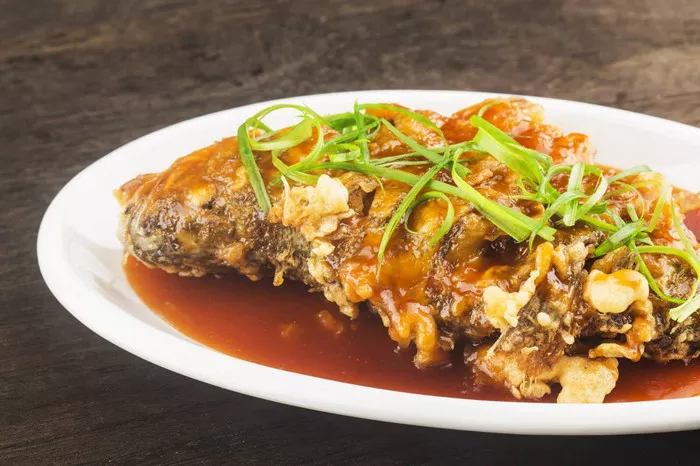Chinese culinary traditions have a rich and illustrious history spanning over 2,000 years. When discussing Chinese cuisine, it is essential to delve into the realm of the four major culinary traditions, which emerged during the late Qing Dynasty. These distinct culinary styles, deeply rooted in regional diversity, local ingredients, and cultural customs, have come to epitomize the essence of Chinese gastronomy.
The four esteemed culinary traditions are the Lu Cuisine, representing the northern region with its refined flavors; the Chuan Cuisine, embodying the bold and spicy flavors of the western region; the Yue Cuisine, hailing from the southern region and renowned for its delicate and exquisite taste; and lastly, the Huaiyang Cuisine, originating from the eastern region and celebrated for its elegant and sophisticated presentation.
SEE ALSO: What Chinese Soup is Keto Friendly?
Sichuan Cuisine
Sichuan cuisine is famous for its bold and spicy flavors. The use of a variety of spices, especially chili peppers and Sichuan peppercorns, creates a numbing and hot sensation that is both addictive and distinctive. Mapo tofu, kung pao chicken, and fish-flavored shredded pork are some of the classic dishes. The key to Sichuan cuisine lies in its complex seasonings and the art of balancing spiciness, numbness, and savory notes.
The chili peppers not only add heat but also contribute a rich flavor.
Sichuan peppercorns provide a unique numbing effect that sets Sichuan cuisine apart. In addition to these signature spices, garlic, ginger, and various soy-based sauces are also commonly used to enhance the taste. The cooking methods often include stir-frying, braising, and steaming to bring out the best in the ingredients.
Cantonese Cuisine
Cantonese cuisine is known for its emphasis on freshness, quality ingredients, and delicate flavors. Dim sum, a wide array of small plates and snacks, is a hallmark of Cantonese dining. Dishes like roast goose, steamed fish, and crispy-skinned chicken showcase the chef’s skill in preserving the natural flavors of the ingredients.
The cooking techniques in Cantonese cuisine are diverse, including steaming, boiling, and roasting. Steaming is especially popular as it helps retain the nutrients and original taste of the food. The use of light seasonings such as soy sauce, ginger, and scallions allows the freshness of the ingredients to shine through. Cantonese chefs are also known for their expertise in making clear broths and soups that are both nourishing and flavorful.
Shandong Cuisine
Shandong cuisine is characterized by its emphasis on seafood, soups, and a combination of salty and sweet flavors. Braised sea cucumber, sweet and sour carp, and Dezhou braised chicken are among the popular dishes. The use of thick, savory broths and a variety of cooking methods, such as frying, roasting, and stewing, contributes to the depth of flavor in Shandong cuisine.
Seafood plays a prominent role due to Shandong’s coastal location. Chefs are skilled at preparing fresh seafood to highlight its natural sweetness. The combination of different textures and flavors in each dish is a notable feature. Sweet and sour flavors are often used in a balanced way to create a harmonious taste profile.
Jiangsu Cuisine
Jiangsu cuisine is renowned for its elegance, delicacy, and emphasis on presentation. The cuisine is known for its use of freshwater fish and shellfish, as well as a variety of vegetables and fruits. Dishes like braised pork knuckle in brown sauce, steamed crab dumplings, and Yangzhou fried rice are representative.
The cooking techniques in Jiangsu cuisine are precise and meticulous. Steaming and braising are commonly employed to create tender and flavorful dishes. The use of sugar and vinegar in moderation adds a touch of sweetness and acidity. The presentation of the dishes is highly artistic, with careful attention paid to color, shape, and arrangement.
Huaiyang Cuisine
Huaiyang cuisine is known for its exquisite craftsmanship, mild flavors, and emphasis on the quality of ingredients. Stewed shark’s fin, lion’s head meatballs, and三套鸭 (three-bird dish) are some of the signature dishes. The cuisine focuses on extracting the essence of the ingredients and presenting them in a refined manner.
The cooking methods in Huaiyang cuisine are diverse and include braising, stewing, and steaming. The use of light seasonings allows the natural flavors of the ingredients to blend seamlessly. The attention to detail in the preparation and presentation of each dish reflects the sophistication of this cuisine.
Conclusion
The five great cuisines of China represent the breadth and depth of Chinese culinary culture. Each cuisine has its own charm and appeal, offering a delightful exploration of flavors and techniques. Whether it’s the bold spiciness of Sichuan, the freshness of Cantonese, the savory richness of Shandong, the elegance of Jiangsu, or the refinement of Huaiyang, these cuisines together form a culinary tapestry that showcases the diversity and creativity of Chinese cooking.
Related Topics:



























